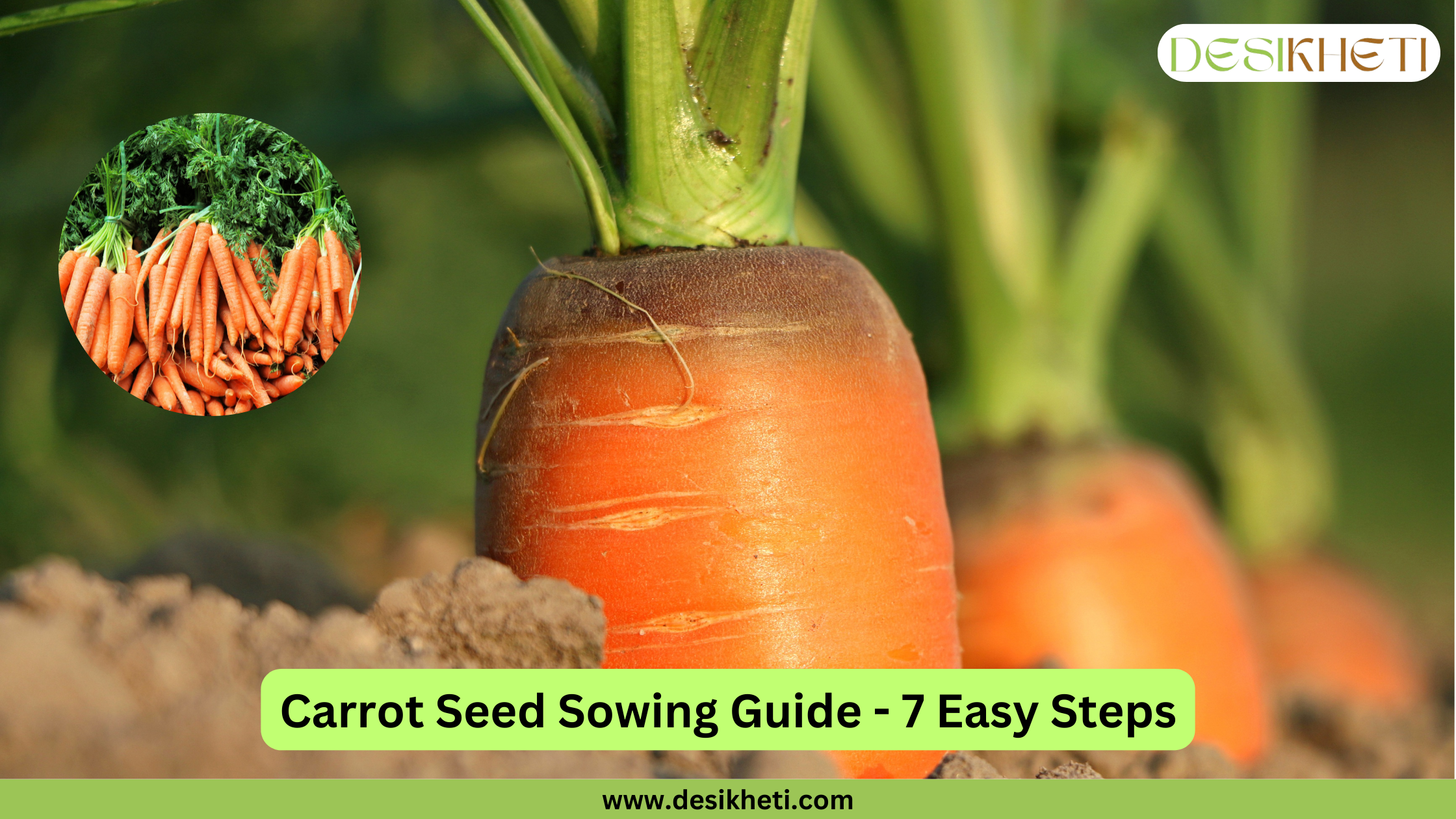Table of Contents
Introduction
Carrots are among the most popular and widely consumed vegetables worldwide. Carrots are a rich source of beta-carotene, fiber, vitamin C, vitamin K1, potassium, and antioxidants. They are used in a variety of dishes, including soups, stews, curries, pies, pickles, and salads. Beyond fresh consumption, carrots are also widely utilized in processed products. They are among the most in-demand vegetables in the market and are cultivated across various farming regions worldwide.
Are you considering growing carrots? Do you want to learn the best techniques for sowing carrot seeds? If so, this blog is for you. Read this step-by-step guide till the end to cultivate carrots effectively.

Step 1: Climate, Soil and Season for Sowing Carrot Seeds
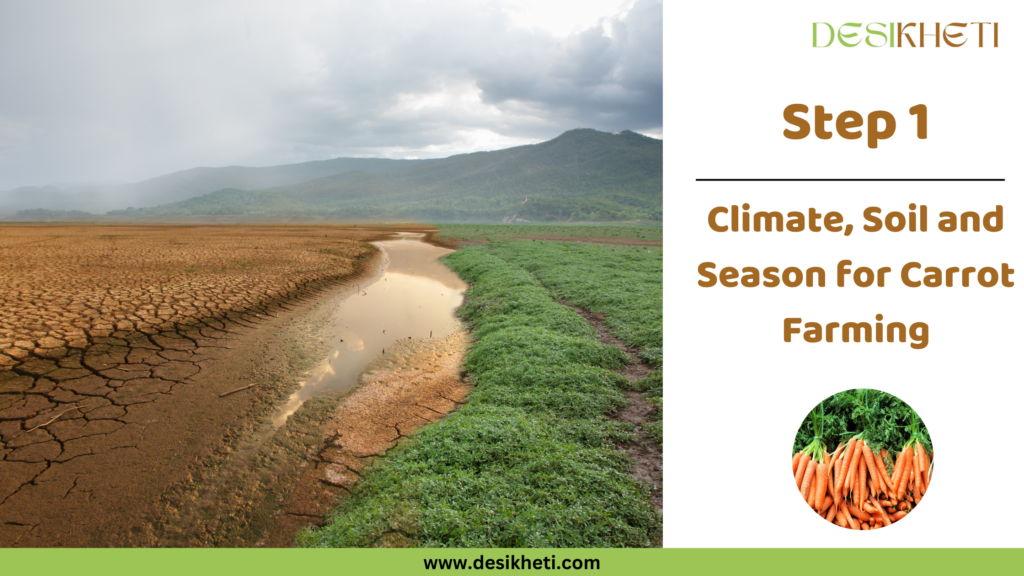
Climate for Carrot Cultivation
Carrots grow best in cooler climates. Carrot seeds germinate well in temperatures between 7°C and 23°C. The ideal temperature range for the healthy growth of carrot plants is 18°C to 21°C. Temperature plays a crucial role in root growth and color development of carrot plants. Carrots grown in temperatures around 15°C to 20°C typically have the most vibrant color.
Carrot plants also require low light for optimal growth. While carrots generally grow well in cooler conditions, some tropical varieties can tolerate higher temperatures and grow well even at temperatures as high as 25°C.
Soil for Carrot Cultivation
Carrots grow best in deep, well-drained sandy loam soils. This type of soil is perfect for early carrot crops as it allows the carrot roots to grow properly. On the other hand, heavy soil can obstruct root growth and may cause the root to split. The optimum soil pH is between 5.5 and 7.
Season for Carrot Cultivation
In India, carrot seeds are best sown during the cooler months when the temperature is low. Tropical carrot varieties are usually sown between September and October, while temperate varieties are sown starting from October onwards. In hilly areas, the ideal time to sow carrot seeds is from January to February, as the climate is cooler during this period.
Step 2: Selecting the Right Carrot Variety
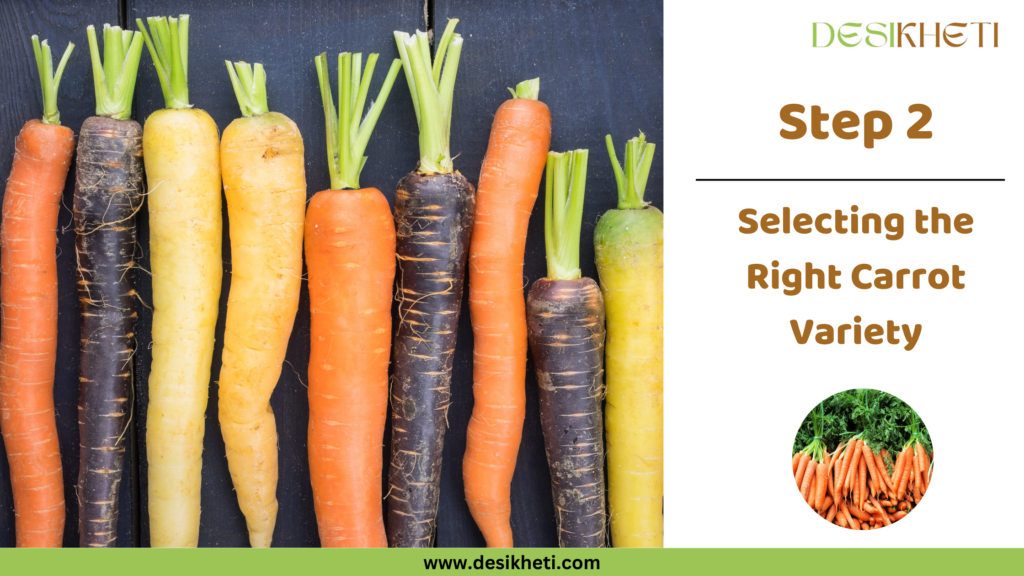
Selecting the right carrot variety is important and depends on factors like season, climate, growing time, and water availability. The size, colour, and shape of carrots can vary based on the variety. You can choose early, medium, or late-maturing carrot varieties depending on how long they take to grow. Some improved varieties can even handle higher temperatures.
For your convenience, a few carrot varieties are listed below.
Step 3: Procuring Quality Carrot Seeds
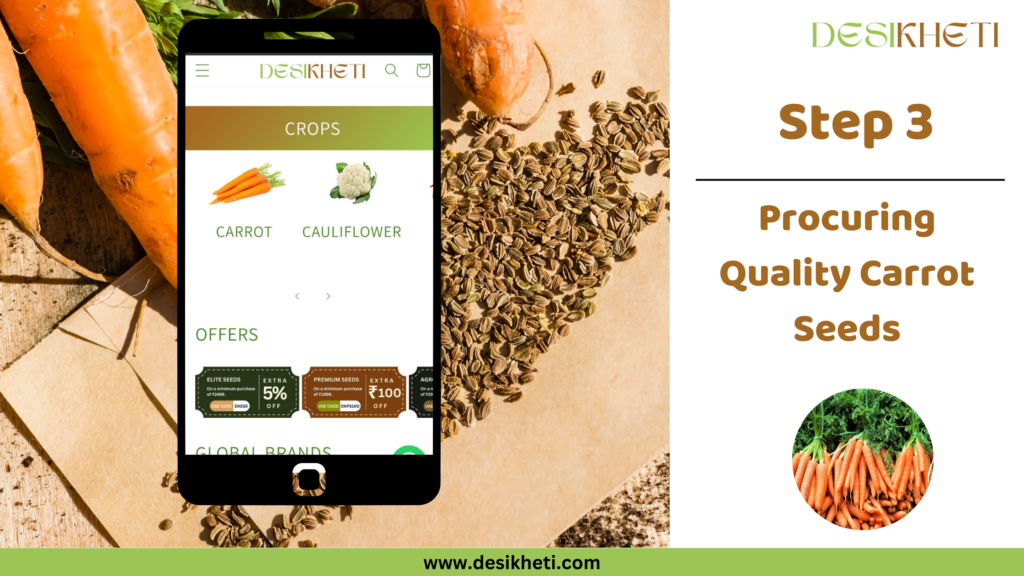
For carrot farmers, using good-quality carrot seeds is essential for a successful harvest. Even with the best farming practices, low-quality carrot seeds can lead to poor yields. By choosing high-quality carrot seeds, you can expect a healthier and more productive crop.
Looking for the best carrot seeds? Desikheti offers a variety of high-quality carrot seeds. You can explore our collection of carrot seeds, place your order online, and have the seeds delivered right to your doorstep.

Seed Rate: Generally, about 2.5 to 3 kg of carrot seeds are required per acre, but this can vary depending on the spacing, variety, etc.
Seed Treatment: Hybrid carrot seeds from private companies are generally pre-treated with chemicals. However, if you’re using untreated seeds, you can treat them with fungicides like Captan or Thiram at 2 g per kg of carrot seeds before sowing.
Step 4: Land Preparation for Sowing Carrot Seeds
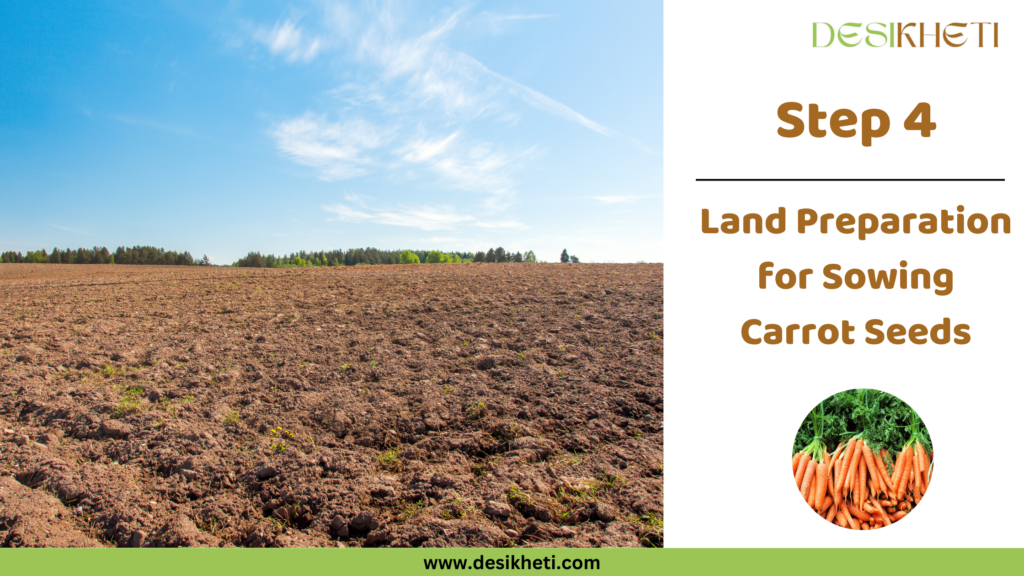
The land needs to be well-prepared so that the carrot roots can grow properly. Start by ploughing the soil to a depth of 30 cm until it is fine and loose. During the final ploughing, add 30 tonnes of Farm Yard Manure per acre. You can also mix 5 kg each of Trichoderma and Pseudomonas with the FYM 5 to 7 days before applying it in the field.
Carrots are nutrient-demanding plants. The exact amount of fertilizer needed depends on factors like soil type, region, and variety. Generally, it is recommended to apply 40 to 60 kg of nitrogen, 25 to 50 kg of phosphorus, and 90 to 110 kg of potassium per hectare during the final ploughing. Too much nitrogen can reduce the quality of the carrots, so be cautious when applying fertilizer.
Carrots can be sown in different ways depending on the area. In hilly regions, carrots are usually sown in raised beds, while in plains, they are sown in ridges and furrows. The method may also vary with the season. Make the raised beds 15 to 20 cm in height, 1 meter in width, and of convenient length. In the case of the ridges and furrows method, space the ridges and furrows 30 to 50 cm apart.
Step 5: Sowing the Carrot Seeds
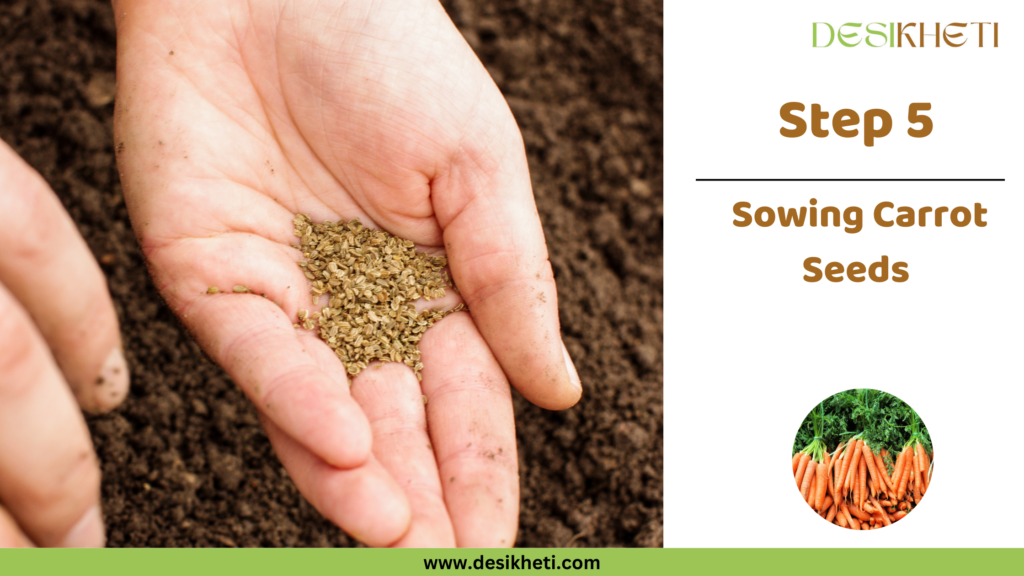
Carrot seeds can be sown either by broadcasting or line sowing. Mix the carrot seeds with sand before sowing so that they are spread evenly. In the case of the ridges and furrows method, sow the carrot seeds along the sides of the ridges, ensuring they are about 5 cm apart in each row.
The carrot seeds need to be planted at a depth of 1.5 cm. After sowing, water the field immediately and provide another irrigation once the carrot seeds have germinated. Under good moisture conditions, the carrot seeds usually germinate within 5 to 10 days.
After 8 to 10 days, thin the plants so that they are spaced 30 cm apart in rows, with 5 to 10 cm between each plant. For faster germination, you can soak the carrot seeds in water for 12 to 24 hours before sowing. Carrot seedlings generally emerge 12 to 15 days after sowing the seeds.
Step 6: Care After Sowing Carrot Seeds
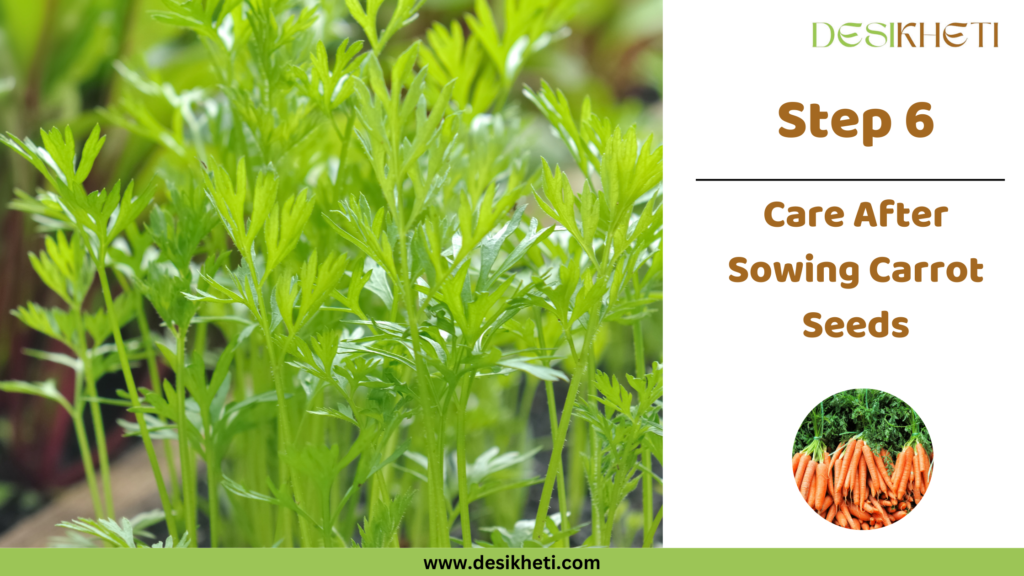
Water the carrot seedlings every 6 to 10 days, depending on the soil, weather, water availability, etc. Be careful not to overwater the carrot farm, as this can lead to excessive vegetative growth, hairy growth on the carrot roots, and distortion of the root shape. Stop watering carrot plants 2 to 3 weeks before harvest to enhance the sweetness and flavour of the carrots.
Carrot seedlings grow slowly, so it’s important to remove weeds in the early stages of carrot plant growth. Weeding should be done around 15 days after sowing the carrot seeds. Monitor for any pests or diseases and take necessary action if there is any infestation.
Step 7: Harvesting Carrots
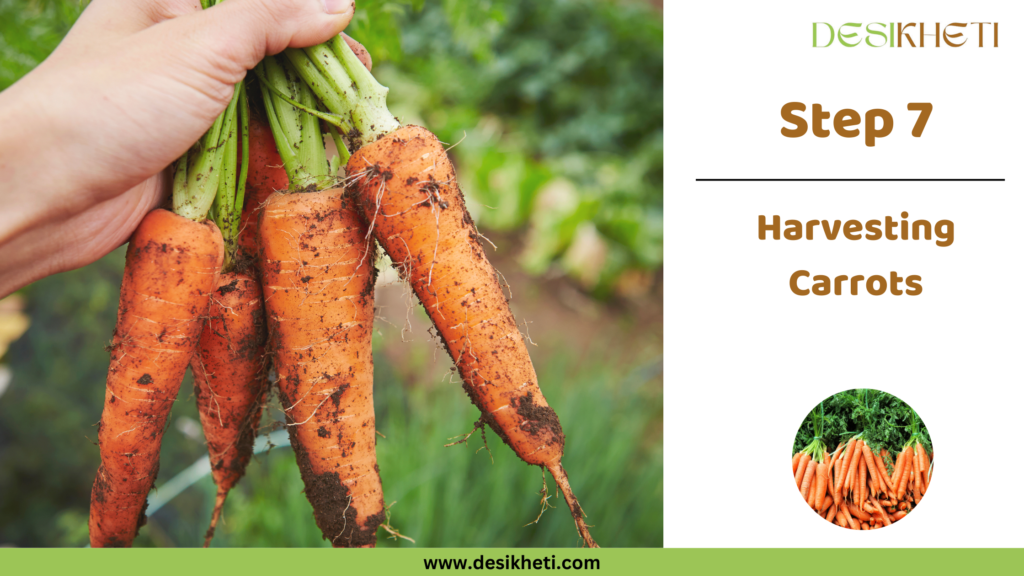
Carrots are ready to be harvested about 90 to 120 days after sowing the seeds. A few indications that the carrot plant is ready for harvesting are that the carrot greens will be around 12 inches long, the carrot shoulders (root tops) will protrude slightly from the soil, and the carrot shoulders will be about 1 inch wide.
There are two main ways to harvest carrots. If the carrots are grown on ridges, loosen the soil with a spade and gently pull the carrot roots by the foliage. Watering lightly before harvest can help make it easier to pull the carrots without damaging them. On flat land, cut the foliage close to the ground and dig out the roots with a spade.
Generally, carrots meant for distant markets are harvested early, before they are fully mature. Carrots grown for local markets are harvested once they are fully grown. After harvesting, remove the foliage and wash the carrot roots.

Common FAQs related to Carrot Seed Sowing
Q. What climate is best for growing carrots?
A. Carrots are a cool-season crop. The ideal temperature for healthy growth of carrot plants is 18°C to 21°C.
Q. When to sow carrot seeds in India?
A. In India, it is preferable to sow carrot seeds during the cool season when temperatures are lower. Carrot seeds are usually sown from September to October.
Q. Which soil is best for growing carrots?
A. Carrots grow well in deep, well-drained sandy loam soils. The carrot crop requires loose, loamy soils for better root development.
Q. What is the rate of carrot seeds per acre?
A. On average, 2.5 to 3 kg of carrot seeds are required per acre of land.
Q. Which state is famous for carrots in India?
A. Haryana
Q. How long do carrots take to grow from seedlings?
A. Carrots take around 90 to 120 days to reach maturity after sowing the seeds.
Q. When should carrots be harvested?
A. Carrots are ready for harvest after about 90 to 120 days of sowing the seeds. Some simple signs that the carrots are ready for harvest include the carrot shoulders (root tops) being about 1 inch in diameter and the carrot plant foliage being around 12 inches in length.
Q. How deep should carrots be sown?
A. Carrot seeds need to be sown at a depth of around 1.5 cm.
Q. How many carrots can I get from one seed?
A. Generally, only one carrot plant will be produced from one seed, yielding one carrot root.
Q. What is the scientific name of the carrot?
A. Daucus carota

